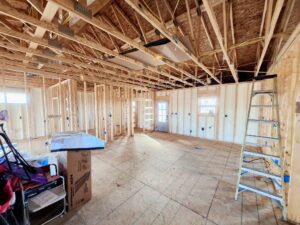The importance of professional insulation removal
Removing old insulation properly is crucial to increase your home’s energy efficiency. Over time, insulation can become damaged or ineffective, leading to energy loss and higher utility bills. Professional insulation removal ensures that old insulation is safely and thoroughly removed, making way for new, more efficient insulation. It also helps identify any potential issues like mold or pests that may be present in the old insulation. By investing in professional insulation removal, you can improve your home’s comfort and save money on energy costs in the long run.

Signs indicating the need for insulation removal
Old and damaged insulation can cause several problems in your home. Some signs that indicate the need for insulation removal are:
- High energy bills that are increasing
- Uneven temperatures throughout your home
- Pest infestations in your attic or walls
- Visible signs of damage like mold or mildew
- Allergies or respiratory issues that worsen at home
If you notice any of these signs, it might be time to consider professional insulation removal to improve your home’s energy efficiency.
Benefits of improving home energy efficiency
Improving your home’s energy efficiency through professional insulation removal can lead to lower energy bills and a more comfortable living space. With better insulation, your home can stay cooler in the summer and warmer in the winter without overworking your heating and cooling systems. This not only saves you money but also reduces your carbon footprint by minimizing energy waste. Additionally, by improving energy efficiency, you can enhance the overall value of your home and contribute to a greener environment.
How insulation affects energy consumption
Insulation is like a cozy jacket for your home. Good insulation helps keep your home warm in winter and cool in summer, which can lower your energy bills. On the flip side, poor or old insulation lets heat escape in the winter and seep inside during summer, making your heating and cooling systems work harder and using more energy. Upgrading your insulation can make a noticeable difference in your energy consumption and save you money in the long run.
Common methods of removing insulation
Removing insulation from your home can be a messy and time-consuming job if not done correctly. Here are some common methods used for insulation removal:
- Vacuuming: A vacuum with a special attachment is used to suck out the insulation from the walls or attic.
- Hand removal: Insulation is manually taken out by hand and placed into bags for disposal.
- Blowing: In some cases, insulation can be blown out using air pressure.
Using the right method is essential to ensure a thorough and efficient removal process.
Risks of DIY insulation removal
DIY insulation removal can pose health risks, as old insulation may contain harmful substances like mold, asbestos, or pest droppings, which can cause respiratory issues and skin irritation. Additionally, improper removal techniques can spread contaminants throughout your home, leading to more significant problems and potential health hazards. Hiring professionals ensures safe and thorough removal, reducing health risks and maintaining your home’s indoor air quality.
Steps involved in professional insulation removal
Professional insulation removal involves several key steps to ensure it is done correctly and effectively. Here are the important steps involved:
- Assessment: The first step is to assess the current state of the insulation in your home. This includes identifying the type of insulation, its condition, and any areas of concern.
- Preparation: Before removal begins, the area needs to be prepared. This may involve clearing any obstacles, sealing off the area to prevent insulation particles from spreading, and ensuring the safety of the workers and occupants.
- Removal: The insulation is then carefully removed using specialized equipment and techniques to minimize any damage to the property or exposure to harmful particles.
- Cleaning: After the insulation is removed, the area needs to be thoroughly cleaned to ensure no debris or particles are left behind.
- Disposal: Proper disposal of the removed insulation is essential to prevent environmental contamination. Depending on the type of insulation, it may need to be disposed of in a specific manner.
- Replacement: Once the old insulation is removed and the area is clean, new insulation can be installed to improve energy efficiency and comfort in the home.
The role of insulation in maintaining indoor temperatures
Insulation plays a crucial role in keeping your home’s temperature stable. It helps to retain heat during the winter and keeps out heat during the summer. Proper insulation creates a barrier that prevents the escape of warmth during colder months and prevents the entry of heat during warmer months. This means your home stays comfortable without overworking your heating or cooling systems. It also helps in reducing energy bills by making your home more energy-efficient.
Hiring a professional insulation removal service
When hiring a professional insulation removal service, you can ensure that the job is done correctly and safely. Professionals have the necessary equipment and expertise to efficiently remove old insulation without causing damage to your home. By investing in a professional service, you can improve your home’s energy efficiency and create a healthier living environment for you and your family.
Long-term impact on energy bills and home comfort
Professional insulation removal can have a significant long-term impact on your energy bills and home comfort. By removing old or damaged insulation and replacing it with new, more efficient insulation, you can reduce your energy consumption and make your home more comfortable. Proper insulation helps regulate indoor temperatures, reducing the need for constant heating and cooling, which in turn lowers your energy costs. Additionally, improved insulation can help maintain a consistent temperature throughout your home, enhancing your overall comfort and well-being.
